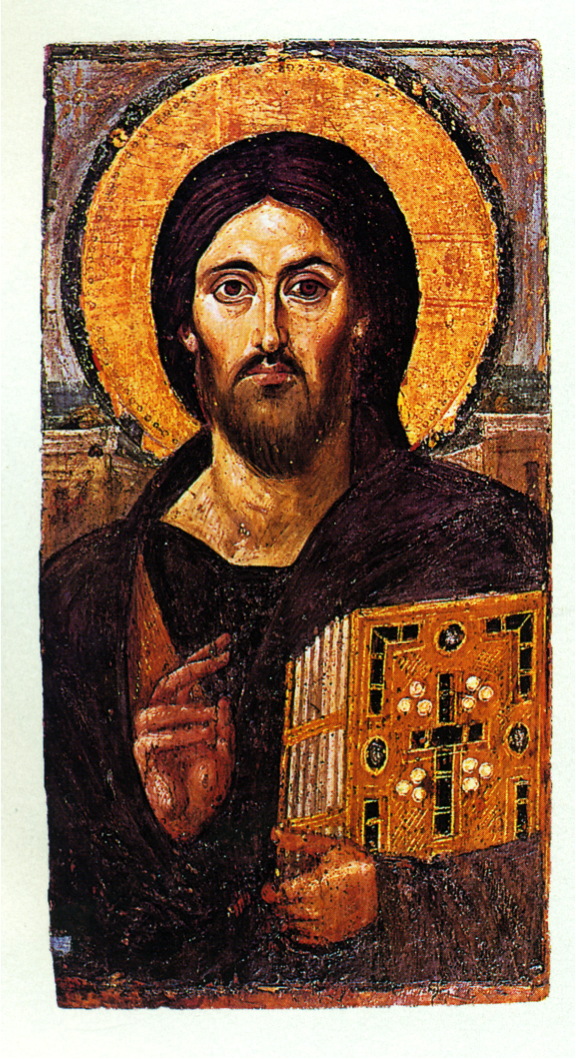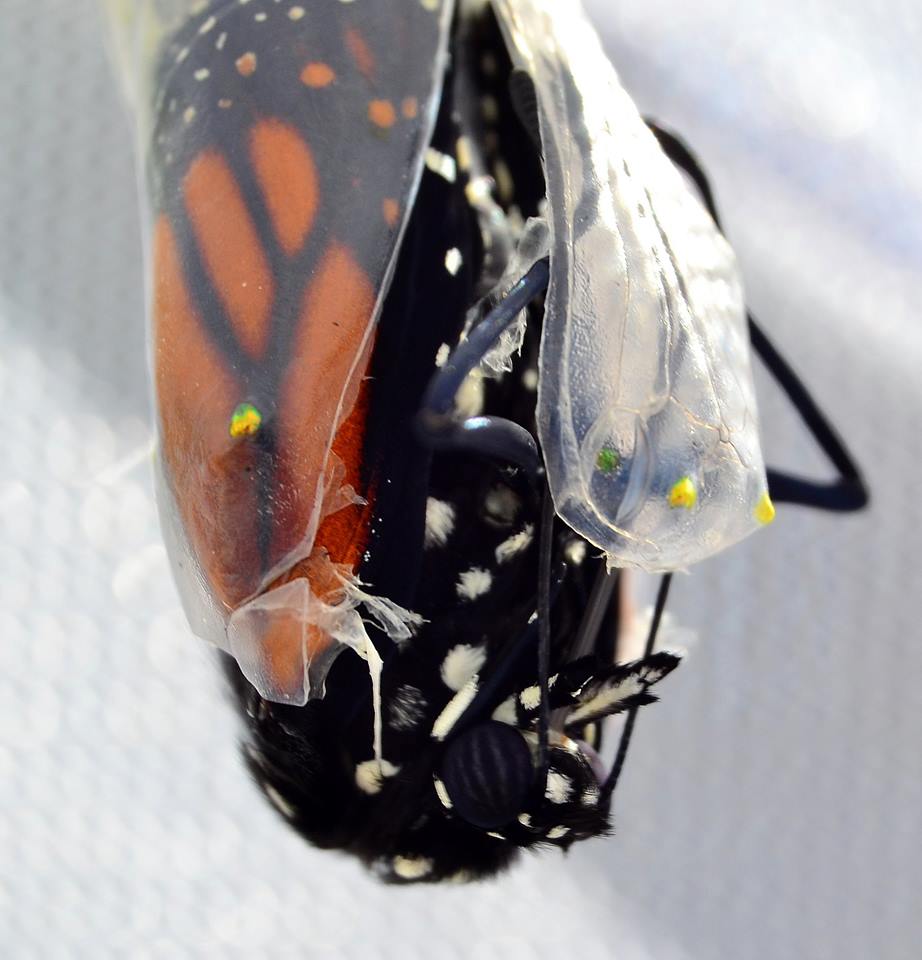Resurrection as Metamorphosis

Hunger for the Mind of Christ by Mark Lawrence
30/7/17 5:10 pm
“Have this mind among yourselves, which is yours in Christ Jesus, who, though he was in the form of God, did not count equality with God a thing to be grasped,
but emptied himself…” Philippians 2:5-7a
There’s a curious word in Philippians. In describing how Jesus came to earth and was resurrected, the ancient Christ-hymn in chapter 2 says Jesus was in the form of God.
Translators are always faced with the endless challenge of coming up with the precise word which honours the nuances attached to the original text. It demands a deep understanding of both grammar and culture. Meaning is sometimes lost in translation.
Philippians was originally written in Greek, and there are two Greek words for form — schema and morphe. Because there’s no English equivalent, both have to be translated as “form," but they don’t mean the same thing. Schema is that outward form which changes from time to time and from circumstance to circumstance. For example, the schema of our bodies changes throughout our life, ranging from infant, child, youth, adult and senior. Morphe, on the other hand, is the essential form which never alters. A baby’s morphe is the same as an adult’s because both are human. So even though the outward form (schema) of our bodies may change, its essence (morphe) never does.
To use a different example, if a Dutch garden were changed into an Italian one, this would be a change in its schema; but if you were to transform a garden into something wholly different, such as a city, this would be a change in its morphe.
The word Paul uses for the form of God in Philippians is morphe. That is to say, Jesus’ unchangeable being is divine. While his outward schema changed, even to the point of death on a shameful cross, he remained in essence divine.
Metamorphosis
The Greek word morphe is of course where we get our word metamorphosis from. A complete metamorphosis in an insect occurs when there is an abrupt and complete change in body structure, like a caterpillar to a chrysalis to a butterfly. The body form of each stage is radically different. “Meta” means “to change,” and so meta + morphe breaks down to mean “the process of changing form”. I guess we could say that Jesus, like a caterpillar, was a shape-shifter, born with the image (form) of God imprinted in his soul but with just the outward appearance (schema) changed.
The ultimate change in Jesus’ form was when God resurrected him from the dead. For us, it’s not just difficult to understand the resurrection. It’s impossible! There are many reasons for this but the greatest is we don't have the right equipment as humans to grasp the truth of Christ’s Resurrection. Now, the death of Jesus - that's something we can grasp. Death is an everyday occurrence, sadly ubiquitous throughout our experience, but the resurrection (especially if it was actually physical) seems hard to swallow.
It’s even more difficult to understand what the Resurrection means in our own lives. This is more perplexing than the physical explanation of it. How does it speak into our lives? And Romans 8:11 says it will happen to us too. "If the Spirit of the one who raised Jesus from the dead lives in you, the one who raised Christ from the dead will give life to your human bodies also, through his Spirit that lives in you.” We want to live like Jesus, both the death and resurrection parts, but don’t we usually just identify with suffering and discomfort and leave out the resurrection with its hope-filled trust?
Suffering usually just makes us cry out in despair, “God, where are you?” Matthew and Mark report that Jesus himself lamented much the same thing on the cross, “My God, why have you forsaken me?” But, unlike us, Jesus didn’t stop at the despair. He also entrusted his life and death to something greater when he said to his Abba, “Into your hands, I commend my spirit.”
Hardship can make people fall apart or become cynical as they white-knuckle it. We usually want to do anything but commend our spirits to God. Jesus’ Father didn’t let him down but changed the form, the morphe, of his body into something completely new. So what was the Resurrection all about?
Resurrection in Nature

To understand the 'how' of the Resurrection, natural science provides a good analogy in the phenomenon of metamorphosis. Complete metamorphosis with its four distinct stages (egg, larva, pupa and adult) occurs in about 88% of insects. Humans change a lot too, but not nearly as much as insects like butterflies. Even though our bodies evolve (child to adult), they still look relatively the same and we always have the same structure within ourselves. Not so for a butterfly; each stage looks completely different, from egg to caterpillar, chrysalis to butterfly.
Take a monarch butterfly for example. When a monarch shape shifts from a caterpillar to a chrysalis, scientists have discovered that all the elements of a butterfly are already in the caterpillar. The cell clusters (called “imaginal disks”) which make up the wings are already present in the caterpillar.
If you opened up a new chrysalis, you’d find green goo, but it’s much more than that. There’s a biological miracle happening inside that green goo formerly known as the caterpillar. Enzymes are being released which digest all the caterpillar tissue, so that the caterpillar is being converted into something new. You could say the caterpillar is digesting itself! Only those little imaginal disks survive the digestive process. They start growing like crazy and become wings, legs, antennae and the organs of an adult butterfly. The chrysalis actually loses half its weight because metamorphosis consumes a lot of energy. So you might say, everything gets eaten up except for these disks which were there all along. Only these groups of cells survive, turning the green goo into eyes, wings, antennae and other adult structures.

Jesus the Shape Shifter
Applying all this to the passage, Jesus went through life stages as well. He was with God, then came to earth as human-yet-divine, died, and was resurrected. Perhaps Jesus’ humbling incarnation on earth could be compared to the lowly caterpillar, and Christ’s ascension and glorification to the butterfly. Maybe the in-between time was like the chrysalis. We see Jesus shape shifting, metamorphosing, from the human defeated on the cross to God exalting him and giving him the highest name of all.
No matter what temporary schema he went through — whether it was taking the form of a human, the trials of his earthly life, or the indignity of the cross — the essential nature of God was in him all along, just like the imaginal disks of the monarch butterfly.
As for us, while our human bodies don’t undergo the complete metamorphosis of a butterfly, scripture says we are all being transformed bit by bit into the image of God (2 Corinthians 3:18). We don’t know exactly what happens when we die and change fully into our intended nature. But for now, maybe the science of metamorphosis can help us remember that God’s image is already operative in the world and in us, though not fully. Author N.T. Wright says, “If you’re a Christian you’re just a shadow of your future self.” No matter what temporary schema we are in, we are all in the process of transforming.
Maybe we’re all like caterpillars, with imaginal disks that will become fully formed wings someday. Here on earth, the task for us lowly caterpillars is to move down in order to serve, as Jesus did. As a wise person once said, “Love always stoops.”
But we can also “think like a butterfly," remembering the hope of transformation still to come, for us as individuals and for our broken world. Resurrection is an already/not yet thing, already here, but not yet in its fullest expression. Even though there’s a tension as we live in an imperfect world, we hope for its full restoration.
In the meantime, we can remember that somehow the form of God is within us no matter the stage. As Paul encourages us in the text, “Have this mind among yourselves, which is yours in Christ Jesus…”.
Resources
Greg Boyd, pastor and author in Minneapolis, speaks about what this earthly life of service looks like in this short video, “The Cruciform Way of the Lamb. Listen to the whole thing or go to the 10:20 mark.
https://youtu.be/agpaFRFL8U4
To read more about the physiological changes in developing butterflies, see this article, “How Does a Caterpillar Turn into a Butterfly?”
https://www.scientificamerican.com/article/caterpillar-butterfly-metamorphosis-explainer/
Or this longer article at
https://monarchlab.org/biology-and-research/biology-and-natural-history/breeding-life-cycle/growth-and-development/
Metamorphosis is one way to understand the resurrection. For another creative re-telling of Jesus’ life and mission, read the wonderful short story The Ragman by Walter Wangerin.
https://www.csh.rit.edu/~ding/ragman_by_walter_wangerin_jr1.htm
Hear it read at
https://www.youtube.com/watch?v=Q6paKdR9dIE
Question of the Week
Where do you see signs of God, either in yourself, in someone else, or in the world?